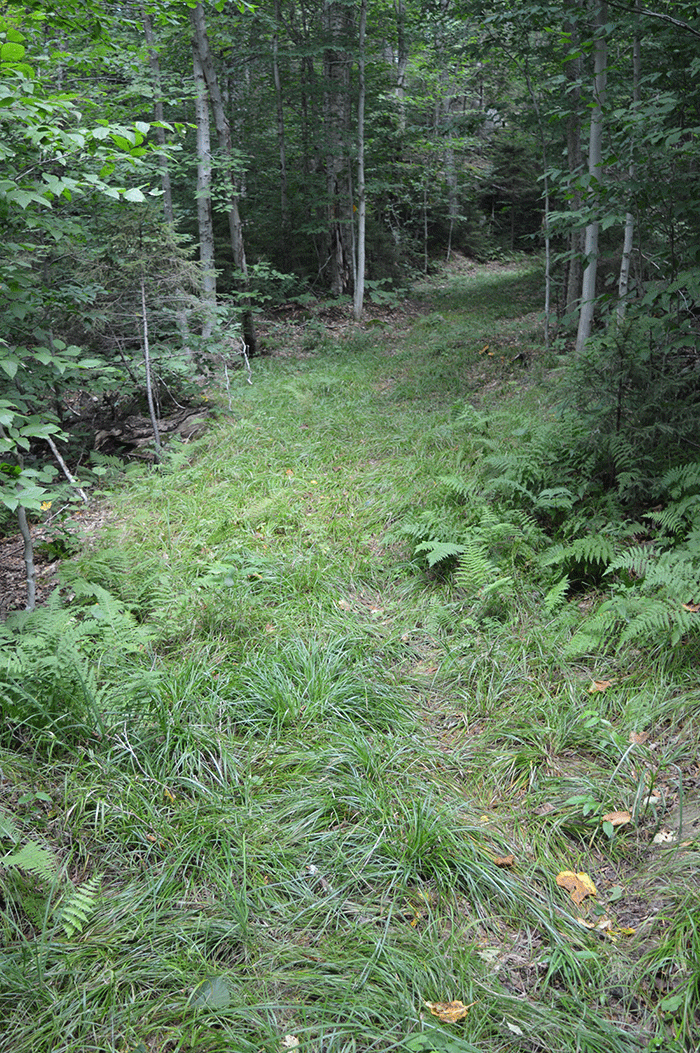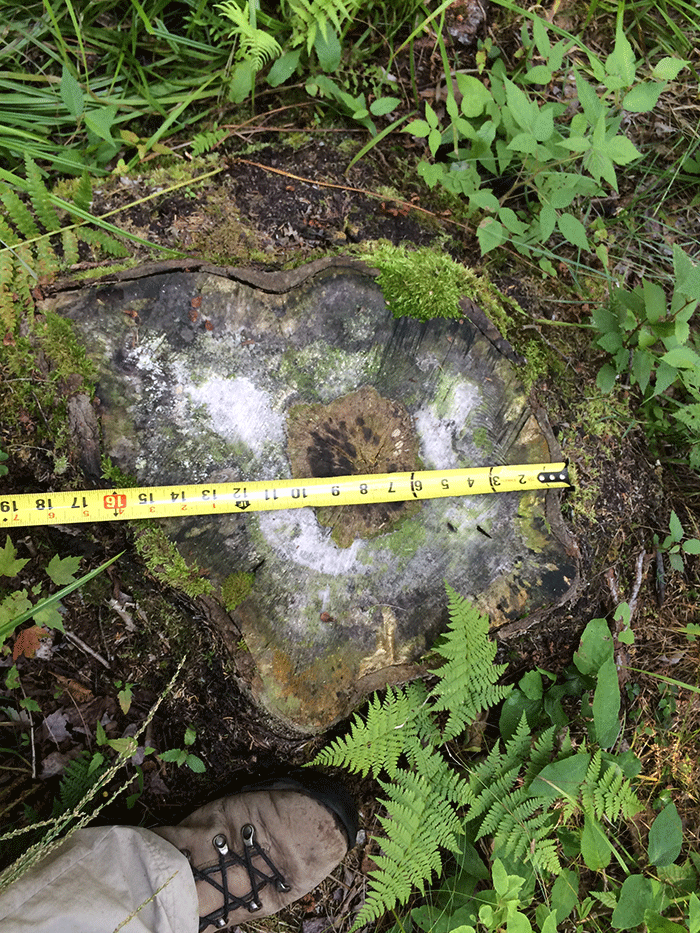Trial focused on amount of tree cutting and impacts to the Forest Preserve from construction of new system of 9-12 foot wide class II community connector snowmobile trails
On July 31, 2017 final papers were submitted in the trial in state Supreme Court in Albany over management of the Forest Preserve. The trial ended in early April. The trial focused on management of the public “forever wild” Forest Preserve by the NYS Department of Environmental Conservation and Adirondack Park Agency. These agencies are currently building a network of 9-12 foot wide class II community connector snowmobile trails (Class II trails) on the Adirondack Forest Preserve that can require cutting down over 1,000 trees per mile and extensive grading and flattening of the land with heavy equipment.
The lawsuit was filed by Protect the Adirondacks (PROTECT) against the NYS Department of Environmental Conservation and Adirondack Park Agency in 2013, and alleges that these trails violate Article XIV, Section 1, the forever wild provision of the NYS Constitution.
The trial ran for 13 days in March and April, 2017. After the trial ended, a complete set of almost 1,700 pages of trial transcripts was produced and these have been posted on PROTECT’s website. Both the Plaintiffs and Defendants were required to submit their Proposed Findings of Fact and Conclusions of Law to the court on July 31st. Copies of both sides’ papers have been posted on PROTECT’s website. A decision is expected in the fall, at some point after Labor Day.

A section of the Seventh Lake Mountain Trail in the Moose River Plains Wild Forest Area. A forest has been turned into a grass field in many places on this trail corridor.
The focus of the trial was two-pronged: 1) issues involving the number of trees cut, including meaning of “timber” in Article 14, Section 1, and what constitutes a tree that is protected under the Constitution; and 2) the impacts on the Forest Preserve from construction of the network of Class II trails due to extensive terrain and habitat alteration. Although the trial covered only the trails that had been previously approved and built, or were still under construction, the outcome of the case is likely to determine the fate of hundreds of miles of additional Class II trails that the State intends to build, and the fate of the entire Forest Preserve.
The four primary Class II trails involved in the trial were the 11.9-mile Seventh Lake Mountain Trail in the Moose River Plains Wild Forest Area, built in 2012; the 3-mile Cooper Kiln or Wilmington Trail in the Wilmington Wild Forest Area, built in 2014; the 2.4 mile Gilmantown Trail in the Jessup River Wild Forest Area, built in 2014; and the 15.25 mile Newcomb to Minerva Trail, which is located primarily in the Vanderwhacker Mountain Wild Forest Area. Work on this last trail was halted in the summer of 2016 when PROTECT obtained a preliminary injunction from the Appellate Division of state Supreme Court, which will remain in effect until the trial court issues its decision.
Although the State argued that only about 6,200 trees had been approved to be cut on about 29 miles of trails, PROTECT proved at trial that over 25,000 trees will be cut, if trees under 3″ DBH are counted, and that 34 miles of Class II trails are being built so far, clearing over 37 acres of forever wild land. The Plaintiff’s case also proved that the construction had caused extensive damage, such as erosion and permanent alteration of forest habitat, despite the Defendants’ claims that they had minimized the harm that they caused.
“The trail network at the heart of this trial is part of a large expansion of motor vehicle use on the Forest Preserve. The level of tree cutting, grading, and vast alterations of the Forest Preserve to build a network of road-like trails goes well beyond what is allowed under the forever wild provision of the State Constitution,” said Peter Bauer, Executive Director of Protect the Adirondacks.
PROTECT’s lead attorney John Caffry said “nothing less than the future of the Forest Preserve is at stake in this case. In 1930 PROTECT’s predecessor organization, The Association for the Protection of the Adirondacks, convinced the courts to block the cutting of 2,500 trees on the Forest Preserve for the construction of the ‘bobsleigh run’ for the 1932 Winter Olympics. If the massive destruction involved in the building of the Class II trials is not likewise blocked, then the state will continue to ignore Article 14 and build more and more destructive projects on land that the Constitution requires ‘be forever kept as wild forest lands’ “.
PROTECT was represented in the trial by John Caffry of Caffry & Flower in Glens Falls and Claudia Braymer of Braymer Law, PLLC in Glens Falls, with additional trial counsel provided by William Demarest, III of Tooher and Barone in Albany. The Defendants were represented by the state Attorney General’s Office.
A court order remains in effect that prohibits all tree cutting and excavation work of class II trails on the Forest Preserve throughout the summer 2017 field season.
Click here for a recap of the trial and a complete set of the trial transcripts.
Plaintiff and Defense Findings of Fact and Conclusions of Law
Protect the Adirondacks Findings of Facts
Protect the Adirondacks Memorandum of Law
Protect the Adirondack Appendix
State of New York Findings of Facts and Conclusions of Law






